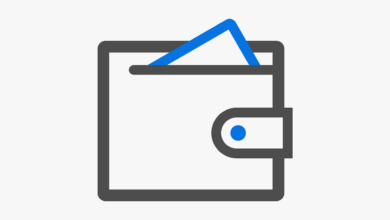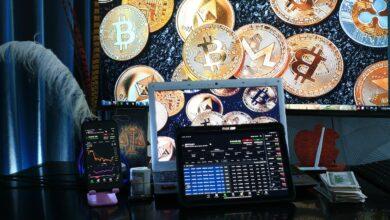Unmasking Fraud – Spotting Fake Crypto Exchanges

In the rapidly evolving landscape of digital currency, where innovation dances hand in hand with deception, identifying a counterfeit cryptocurrency exchange has become an essential skill for traders and investors alike. The allure of financial gain often blinds individuals to the lurking dangers of fraudulent platforms, which can lead not only to monetary loss but also to a profound erosion of trust in the entire ecosystem of crypto trading. Thus, it is imperative to cultivate a discerning eye that allows one to navigate this complex terrain with confidence and security.
Detecting a deceptive digital currency exchange requires a methodical approach, akin to the scientific inquiry we cherish. Armed with knowledge and a critical mindset, one can embark on the journey of recognizing potential red flags that signal a fraudulent crypto platform. From analyzing user reviews and scrutinizing transaction fees to verifying regulatory compliance and the authenticity of customer support channels, each detail contributes to a comprehensive understanding of a given exchange’s legitimacy.
Identifying a fake cryptocurrency exchange is not merely an exercise in skepticism; it is an affirmation of our commitment to safeguarding our investments and fostering a healthier trading environment. By embracing transparency and accountability as guiding principles, we empower ourselves–and others–to rise above the murky waters inhabited by deceitful players in the market. In doing so, we not only protect our financial interests but also contribute to the overall integrity of the burgeoning world of cryptocurrency.
Identifying Fake Cryptocurrency Exchanges
In the ever-evolving landscape of digital currency, the rise of fraudulent cryptocurrency exchanges poses a significant threat to unsuspecting traders. These deceptive platforms often masquerade as legitimate trading venues, enticing users with promises of high returns and low fees. To navigate this treacherous terrain, one must adopt a discerning eye, capable of spotting the telltale signs of counterfeit exchanges. This journey begins with a thorough examination of the exchange’s credentials and operational transparency.
First and foremost, genuine cryptocurrency exchanges typically provide clear information about their regulatory compliance. A legitimate platform will often be registered with relevant financial authorities and adhere to stringent anti-money laundering (AML) and know your customer (KYC) regulations. In contrast, a fraudulent exchange may lack such verifiable credentials or offer vague descriptions of their compliance measures. Always scrutinize the exchange’s website for official registrations; if such information is absent or obscured, it raises a red flag.
Equally important is the assessment of user reviews and community feedback. Reputable exchanges usually foster active user communities that share experiences and insights on social media platforms and dedicated forums. Conversely, counterfeit trading platforms might generate artificially inflated positive reviews or suppress negative feedback through censorship. Conducting a simple online search can reveal a treasure trove of user experiences–if the consensus leans heavily toward dissatisfaction or outright warnings, it’s prudent to steer clear.
Another critical aspect to consider is the security features offered by the exchange. Legitimate cryptocurrency platforms invest significantly in robust security measures to protect users’ assets. Features such as two-factor authentication (2FA), cold storage of funds, and regular security audits denote a commitment to safeguarding their clients’ investments. In stark contrast, a deceptive exchange may gloss over security protocols or fail to mention them altogether, leaving users vulnerable to hacks and thefts.
The liquidity and trading volume present on an exchange also serve as indicators of its legitimacy. Established cryptocurrencies typically exhibit consistent trading activity, while fake exchanges may manipulate their trading volumes to create an illusion of popularity. This can often be spotted through sites that track market data; if an exchange shows erratic spikes in volume without corresponding price movements, it could be engaging in wash trading–a common tactic employed by fraudulent platforms.
Finally, consider the ease with which you can withdraw funds from the exchange. A hallmark of a trustworthy cryptocurrency platform is its straightforward withdrawal process. If you encounter excessive delays or unexplained restrictions when attempting to access your funds, it is likely indicative of a scam designed to trap investors’ assets within the platform. The essence of recognizing a fake cryptocurrency exchange lies in meticulous research and vigilance–by staying informed and skeptical, you can protect yourself from the myriad of deceptive digital currency traps that exist today.
Signs of a Scam Exchange: Identifying a Fraudulent Cryptocurrency Platform
In the rapidly evolving world of digital currencies, recognizing a fraudulent cryptocurrency exchange has become paramount for investors. The allure of significant returns often leads individuals to overlook essential indicators of deception. To navigate this complex landscape, it is vital to be aware of the common traits exhibited by fake trading platforms. A primary sign is the lack of regulatory compliance; legitimate exchanges are typically registered with relevant authorities and adhere to stringent regulations. If an exchange operates in secrecy without clear legal standing, it should raise immediate suspicions.
Another prominent feature to consider when identifying a counterfeit crypto trading platform is the absence of transparency regarding ownership and operational practices. Authentic exchanges provide detailed information about their founders, team members, and corporate structure. In stark contrast, fraudulent platforms often obscure these details, presenting themselves as trustworthy entities while concealing their true nature. Additionally, if an exchange lacks a clear and accessible customer support system, it may signal potential fraud. A reliable exchange prioritizes user experience, offering robust support channels for inquiries and concerns.
Detecting deceptive digital currency exchanges also involves scrutinizing the user interface and overall functionality of the platform. Many scam exchanges employ poorly designed websites that prioritize aesthetics over usability. This can manifest as confusing navigation, broken links, or an absence of essential features like two-factor authentication. Such deficiencies not only compromise security but also suggest a lack of commitment to providing a safe trading environment. Users should ensure that any platform they engage with is intuitive and professional in its design.
Moreover, one must be vigilant about unrealistic promises made by certain exchanges. Promoting guaranteed returns on investments or exaggerated success stories is a classic tactic used by fraudulent operators to lure unsuspecting victims. It is crucial to approach such claims with skepticism; if something sounds too good to be true, it likely is. The cryptocurrency market is inherently volatile, and reputable exchanges will not guarantee profits but rather emphasize informed trading strategies.
Another red flag when spotting a scam exchange lies in the liquidity of the platform. Legitimate cryptocurrency exchanges facilitate substantial trading volumes and allow users to buy and sell assets swiftly. Conversely, fraudulent platforms might initially display high activity but can quickly become illiquid once they attract enough unsuspecting investors. This can result in difficulties withdrawing funds or executing trades efficiently, leading users into a trap from which recovery may be impossible.
Finally, monitoring user reviews and community feedback can serve as a valuable tool in recognizing fraudulent platforms. Engaging with online forums and social media channels provides insights into other users’ experiences with specific exchanges. If widespread reports of scams or poor service emerge, it is prudent to avoid those platforms altogether. By conducting thorough research and remaining aware of these key indicators, investors can protect themselves from falling victim to counterfeit cryptocurrency exchanges in an increasingly digital world.
How to Spot a Fake Cryptocurrency Exchange
In the rapidly evolving landscape of cryptocurrency, recognizing legitimate trading platforms is crucial to safeguarding your investments. The first step in this process involves researching exchange credentials. A genuine cryptocurrency exchange will typically provide transparent information regarding its registration, regulatory compliance, and operational history. Look for exchanges that are registered with recognized financial authorities and have undergone rigorous audits. Checking for user reviews on independent forums can also yield insights into the platform’s reliability and customer service quality, helping you spot potential red flags.
Once you’ve established a baseline for what constitutes a legitimate exchange, the next task is identifying a fraudulent cryptocurrency exchange. Several telltale signs can assist in this endeavor. For instance, if an exchange offers excessively high returns on investments or promises guaranteed profits with minimal risk, it is likely operating under deceptive pretenses. Furthermore, a lack of clear contact information or responsive customer support should raise alarms. Always ensure that the platform has a robust presence online, including social media engagement and active community discussions.
Detecting a deceptive digital currency exchange requires scrutiny of its security measures. Legitimate exchanges will employ advanced security protocols such as two-factor authentication (2FA), cold storage of funds, and regular security audits. If an exchange lacks these essential features or has previously suffered from major breaches without taking corrective action, it signifies a potentially counterfeit operation. Additionally, be cautious of platforms that require excessive personal information or payment methods that cannot be traced; these tactics are often employed by fraudulent entities to exploit unsuspecting users.
Finally, recognizing a counterfeit crypto trading platform involves assessing its overall functionality and user experience. Authentic exchanges prioritize user-friendly interfaces, reliable transaction speeds, and comprehensive educational resources for traders of all experience levels. If you encounter an exchange with frequent downtime, sluggish performance, or poor interface design, it may be indicative of underlying issues or worse–fraudulent activity. By remaining vigilant and employing these investigative strategies, you can better navigate the treacherous waters of cryptocurrency trading while protecting your assets from deceitful operators.
Conclusion: Safeguarding Your Digital Wealth
In the intricate dance of cryptocurrency trading, where fortunes can shift in the blink of an eye, recognizing the contours of a fake exchange is paramount. The allure of rapid gains often obscures the lurking shadows of counterfeit platforms that prey on the unsuspecting. As we navigate this digital landscape, it is essential to arm ourselves with knowledge–knowledge that empowers us to identify and reject the fraudulent exchanges that threaten our investments.
As we’ve explored throughout this article, the key to protecting your assets lies in a vigilant approach to detecting deceptive cryptocurrency exchanges. By employing a combination of research, skepticism, and critical analysis, you can spot potential threats before they materialize into significant losses. Remember, a genuine platform paves the way for transparent trading, while a counterfeit one cloaks itself in ambiguity and false promises.
Essential Strategies for Identifying Fraudulent Exchanges
- Investigate Regulatory Compliance: Always check if the platform adheres to local regulations. A legitimate exchange will be transparent about its licensing and compliance status.
- Examine User Reviews: Seek out experiences shared by other users. A consistent wave of negative feedback can signal a deceptive platform.
- Assess User Interface and Security Features: An authentic exchange invests in robust security measures, including two-factor authentication and encryption protocols.
- Beware of Unrealistic Promises: If it sounds too good to be true–like guaranteed returns or unbelievable bonuses–it’s likely a trap set by a counterfeit operation.
In conclusion, recognizing and identifying a fraudulent cryptocurrency exchange is not merely an exercise in caution; it is an ongoing practice rooted in vigilance and discernment. By embracing these principles, you not only protect your investments but also contribute to the integrity of the digital currency ecosystem as a whole. Let us remain steadfast in our pursuit of knowledge, for it is through understanding that we can truly thrive in this exhilarating yet perilous arena of cryptocurrency trading.





